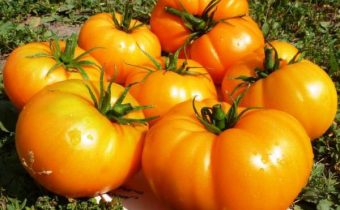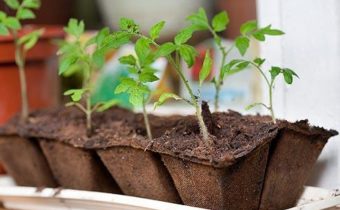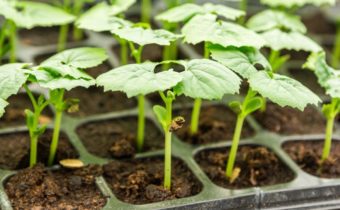How to grow carrots to be large and sweet
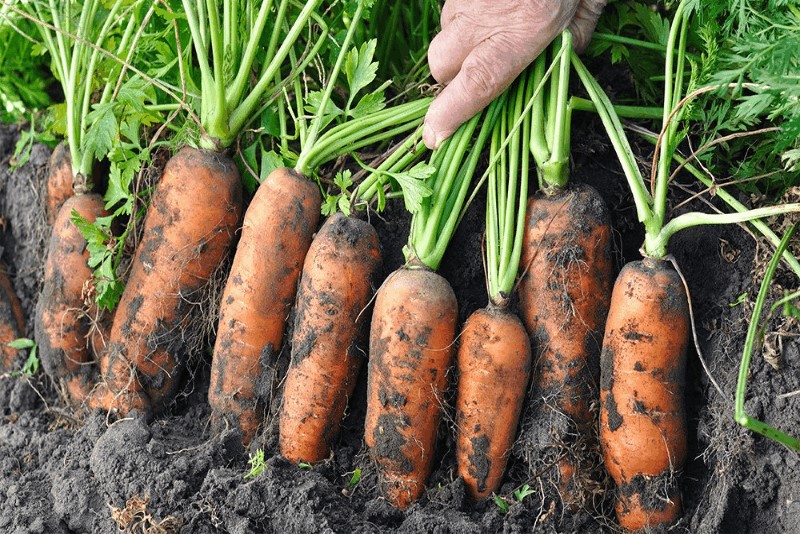
The primary role for a good harvest of carrots is the process of growing. It should pay special attention, investing time and effort. Carrot - resistant to various conditions culture. Growing a vegetable is not too difficult, but in order for it to become large and sweet, you will have to work hard.
Conditions for growing carrots
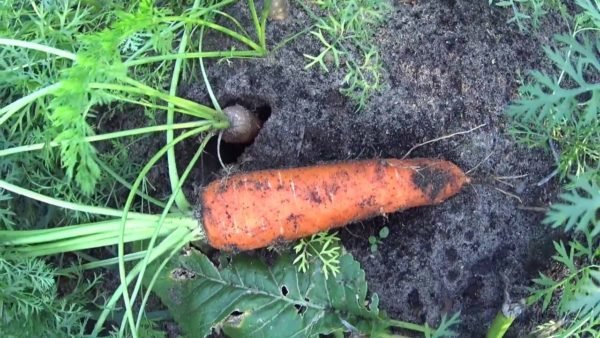 Carrots - vegetable culture, which is particularly popular. Vegetable is widely used in the preparation of a variety of dishes: hot, soups, salads and desserts. It is unpretentious in growing and care. For best results, it is recommended to create the most favorable conditions in the soil. It is important to organize the regularity of watering and feeding.
Carrots - vegetable culture, which is particularly popular. Vegetable is widely used in the preparation of a variety of dishes: hot, soups, salads and desserts. It is unpretentious in growing and care. For best results, it is recommended to create the most favorable conditions in the soil. It is important to organize the regularity of watering and feeding.
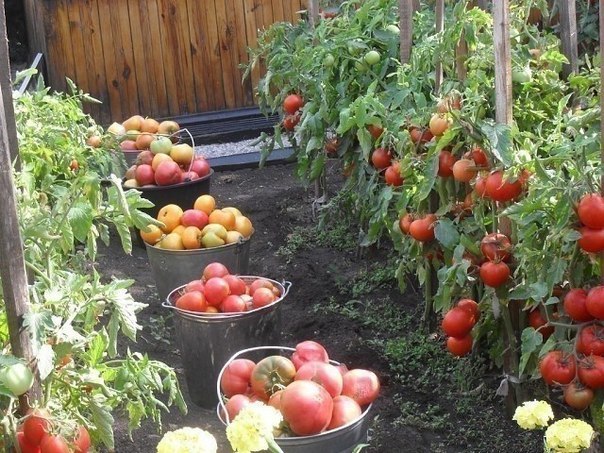
Some rules of cultivation:
- In one place it is recommended to plant carrots no more than three times in a row. The soil during this period is not depleted, preserving nutrients and trace elements.
- In the first year of planting, it is advised to use the beds on which potatoes, celery and dill used to grow - vegetables give vitamins to the earth, which further help the rapid growth of carrots.
- For planting, use only treated seeds. The probability of their germination is higher than that of wild, untreated seeds.
- Sow in spring when the snow melted and the average daily temperature is eight degrees Celsius.
By creating ideal conditions for the growth of carrots, you can be sure of an excellent result. It is necessary to disassemble in detail all the components of a successful cultivation and pay attention to them.
Consistent use of several methods of cultivation guarantees a quality product.
How to prepare beds
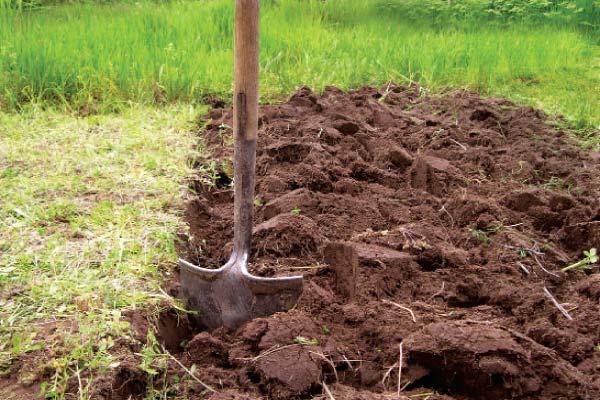 Preparing for the planting season begins long before the process. As soon as the harvest ends, the soil is thoroughly cleaned from debris, grass, weeds and plant roots. In dry weather, it is necessary to dig the beds. It is better to dig deep, carefully processing the already dug up earth.
Preparing for the planting season begins long before the process. As soon as the harvest ends, the soil is thoroughly cleaned from debris, grass, weeds and plant roots. In dry weather, it is necessary to dig the beds. It is better to dig deep, carefully processing the already dug up earth.
A few recommendations:
- Aligning the beds is pointless and harmful - carrots are not the kind of vegetable that needs leveled earth. Loosened soil better passes oxygen and moisture, which accumulates in the ground over the winter, and then gives the vegetable. It is impossible to dig a bed in the spring, an elementary rake treatment will do.
- Pre-prepared seeds are planted in the ground at a shallow depth. Preparation of carrot crops is carried out for a half or two days before planting. They are placed in a solution of potassium permanganate, boric acid and fertilizer. Unprepared seeds are less likely to climb.
- Sometimes fertilizer is added directly to the soil before digging. Gardeners recommend adding humus, ash and compost. It must be thoroughly mixed to evenly distribute the fertilizer.
- The bed for carrots is not recommended to break next to the planting of dill, celery and parsley. Otherwise, rotting of root crops is possible. It is desirable that sunlight gets to the garden bed all day long - a natural growth accelerator.

In some cases, preparing the beds carried out otherwise. In the fall, they dig a deep trench, put the compost in to sleep and mix it with the ashes. During the winter, the earth is saturated with microelements, and then saturates the ripening carrots with them.
Tricks to help increase carrot growth
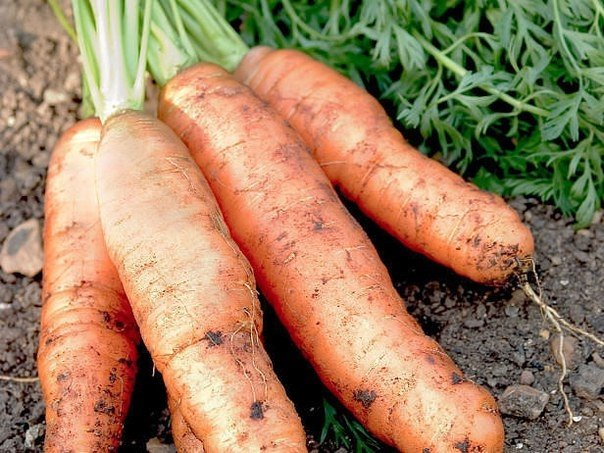 Each gardener has his own methods of increasing growth.
Each gardener has his own methods of increasing growth.
- Some recommend planting carrots not one by one in the garden, but in piles called “combs”. Contrary to popular belief, there is plenty of carrots, in this position they grow even larger. It is easier to collect carrots in the ridges - it is easier to pull out a large shock of tops.
- Frequent hilling and weeding. Once a week weeding helps the sun's rays to break through the soil and saturate the product with vitamin D, which stimulates growth.
- Collect not all seeding at once. From time to time you can get carrots from the ground, then the rest will be more room for growth, and people can enjoy fresh vegetables all season.
- The closer the harvest time, the more water is required for irrigation. You need to water at the rate of 85 liters per square meter. Two weeks before the final harvesting, stop watering completely to avoid rotting.
- Pad and mulching. Retain moisture and vitamins.
- Thinning. Thorough carrots to the width of one palm, as soon as the first leaf appears on one carrot. Providing enough space for each fruit;
The larger the seeds, the greater will be the final result.
In an effort to increase the size of farmed carrots, several techniques should be applied simultaneously. Particular attention should be paid to fertilizers. The use of additional funds that stimulate growth is justified - roots grow large, crispy and juicy, protected from rotting.

What to feed, so that the carrots were large and sweet
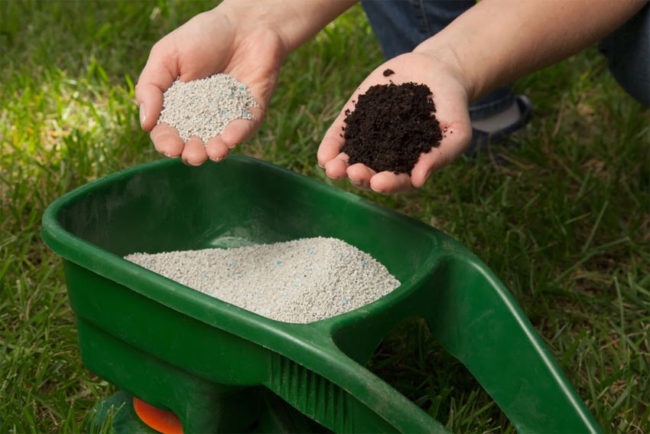 For fast and effective growth of carrots need to feed a variety of useful substances. Fertilizers have different properties, so it is recommended to use complexes. Depending on the origin of the fertilizer, the compost is mineral or organic, dry or wet:
For fast and effective growth of carrots need to feed a variety of useful substances. Fertilizers have different properties, so it is recommended to use complexes. Depending on the origin of the fertilizer, the compost is mineral or organic, dry or wet:
- Nitrogen supplement. At the very beginning of summer, when the earth has not yet accumulated enough nutrients, you can add nitrogenous fertilizer to the soil. Growth and resistance of carrots to external influences that hinder the proper development of vegetables will increase.
- Phosphoric fertilizer. With the addition of phosphorus, roots become sweeter, stronger and harder. Otherwise the carrot will dry.
- Potassium. Makes taste soft, keeps freshness for a long time.
- Boron. Stimulates the strengthening of plants. Unlike previous versions of the fertilizer, a solution of bromine is applied to the tops, and not on the root system.
Sharing a variety of tools contributes to rapid and better development.
Growing a carrot, it is recommended to use a combination of several methods that improve not only the growth rate, but also the quality of the final product.


